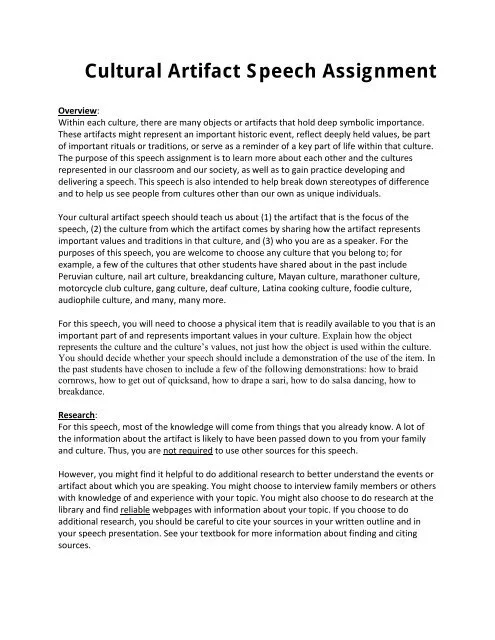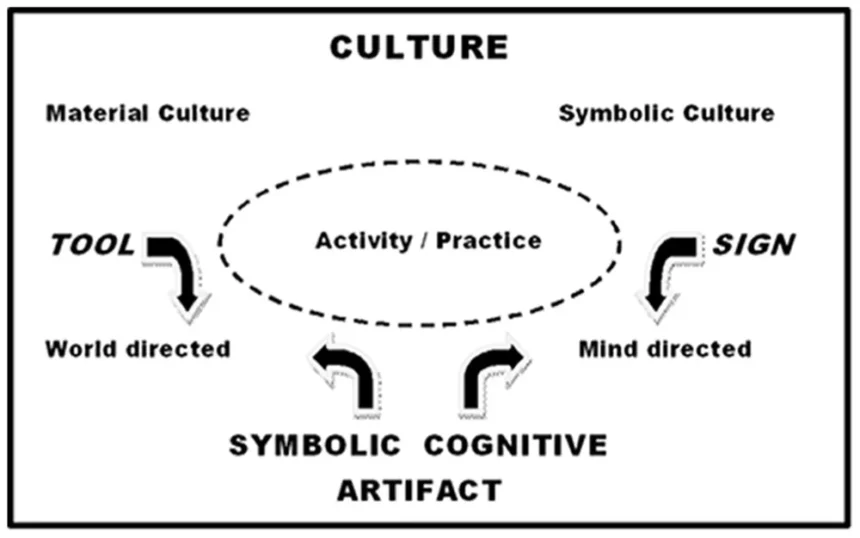In every culture, certain objects or practices hold significant meaning. These are often referred to as cultural artifacts. A cultural artifact can be anything from a piece of clothing to a piece of art, or even a traditional practice that has been passed down through generations. These artifacts serve as a bridge between the past and the present, telling stories about a people’s history, values, and identity. Today, in a world where our cultural identities are constantly evolving, the importance of cultural artifacts continues to be relevant.
In this article, we will explore the concept of a cultural artifact speech, how it plays a role in our understanding of history and identity, and why it is a powerful tool for communication. Whether you’re giving a speech about an artifact or simply looking to understand its role in a broader cultural context, the ability to convey the meaning and significance of such objects is invaluable.
What is a Cultural Artifact?
A cultural artifact is a tangible item created by humans that holds historical, cultural, or social significance. These artifacts can include tools, art, clothing, manuscripts, or even ancient structures. They offer a glimpse into the lives, beliefs, and practices of people from different times and places.
For example, the Mona Lisa, Leonardo da Vinci’s famous painting, is a cultural artifact. It represents not only the artist’s work but also the period in which it was created, as well as the social and political climate of 16th-century Europe. Similarly, an ancient Greek vase could tell us about the society’s approach to art, religion, and even daily life.
The Power of a Cultural Artifact Speech
When we talk about a cultural artifact speech, we are referring to a speech that focuses on explaining the significance of an artifact. This could be a historical artifact, a work of art, or an everyday object that holds cultural meaning. The power of such a speech lies in its ability to educate and connect an audience to the past, enhancing their understanding of a particular culture or society.

Why is this important? In today’s globalized world, where many cultures are constantly interacting, understanding each other’s artifacts can lead to a deeper appreciation of diversity. By focusing on a cultural artifact, speakers can highlight the values, beliefs, and traditions that shaped the lives of those who created them.
Key points to remember when delivering a cultural artifact speech include:
- Providing context: Explain the historical and cultural background of the artifact.
- Emphasizing significance: Why does the artifact matter? How does it relate to the society that created it?
- Connecting to modern life: Show how the artifact’s influence continues to affect our world today.
- Engaging your audience: Use visuals or interactive elements to make your speech more engaging.
The Role of Cultural Artifacts in Identity Formation
Cultural artifacts are more than just historical objects; they are symbols of identity. They help communities preserve their traditions, communicate shared values, and pass down knowledge to future generations. By reflecting on the artifacts of a culture, people can better understand who they are, where they come from, and what they stand for.
For instance, the use of native language in cultural artifacts such as literature, oral storytelling, or even songs, is a key part of maintaining cultural identity. Artifacts that represent a nation’s history—like the Statue of Liberty in the United States—also become symbols of national pride and shared beliefs.
Take a look at some examples of cultural artifacts and their impact on identity:
- Artifacts in Indigenous Cultures: In many Indigenous cultures, artifacts such as pottery, weaving, and carvings represent important elements of cultural identity, spirituality, and social status.
- Historical Monuments: The Eiffel Tower in Paris or the Pyramids of Giza are artifacts that not only reflect the engineering feats of their time but also represent the cultural pride of the nations they belong to.
- Religious Symbols: Religious texts, statues, and other objects are cultural artifacts that are deeply tied to a community’s sense of faith and collective identity.
A Closer Look at Cultural Artifacts in Public Speaking
When delivering a cultural artifact speech, your goal is to make the audience see the artifact in a new light. This requires more than just describing the artifact; you need to bring out its deeper meanings and help your listeners understand its role in the cultural fabric it belongs to.
To help you get started, here are a few strategies to enhance the impact of your cultural artifact speech:
- Begin with a Story
People connect with stories. Instead of diving straight into the facts about an artifact, start with a compelling story that explains how it was made, discovered, or used. This will immediately draw your audience in. - Use Visuals
Showing an image of the artifact during your speech helps bring the object to life. Visuals allow your audience to connect with what you’re talking about on a deeper level. A picture is worth a thousand words! - Relate to the Audience
While the artifact you’re discussing may be from a different time or place, try to find ways to relate it to the audience’s own experiences. How does the artifact speak to universal themes like love, struggle, or innovation? - Highlight the Emotional Connection
Some artifacts evoke strong emotions. Whether it’s a national flag or a historical document, show how the artifact inspires pride, hope, or resilience. These emotional connections often leave a lasting impression. - Incorporate Statistics or Research
If applicable, use statistics or historical research to support your claims about the artifact. For example, you might discuss how the discovery of a particular artifact changed our understanding of history or how it has impacted modern-day society.
Examples of Famous Cultural Artifacts
Some cultural artifacts have become icons of human history. Let’s take a look at a few famous examples:
- The Rosetta Stone
Discovered in 1799, the Rosetta Stone unlocked the mystery of ancient Egyptian hieroglyphs. This artifact has played a pivotal role in understanding the history of Egypt and the development of human language. - The Dead Sea Scrolls
Found between 1947 and 1956, the Dead Sea Scrolls contain some of the oldest known texts of the Hebrew Bible. These scrolls have provided valuable insights into the religious practices of ancient Jews. - The Terracotta Army
The discovery of over 8,000 life-sized clay soldiers in China in 1974 was a monumental find. The Terracotta Army represents the emperor’s desire for protection in the afterlife and offers insights into ancient Chinese art and military organization.
The Impact of Cultural Artifacts on Modern Society
Cultural artifacts do not simply belong to the past. They continue to shape the present and influence the future. Museums around the world showcase these artifacts, allowing people from all walks of life to engage with history and culture in a meaningful way.

Statistics highlight the importance of cultural artifacts:
- The global museum industry generated approximately $50 billion in revenue in 2019, according to the International Council of Museums (ICOM).
- 70% of Americans visit museums at least once every year, a report from the American Alliance of Museums shows.
- Cultural tourism, driven by artifacts and heritage sites, contributes over $300 billion annually to the U.S. economy.
The preservation of cultural artifacts is not just a matter of historical interest. It is an economic, social, and political issue that reflects how societies value their heritage.
Conclusion
The cultural artifact speech is a powerful way to engage with history, culture, and identity. By presenting an artifact in a thoughtful, compelling way, speakers can bring the past into the present, creating a deeper understanding of the values, traditions, and beliefs that shape our world today. Artifacts are more than just objects—they are the stories of who we are.
As we continue to evolve in a globalized society, the question remains: how can we ensure that future generations appreciate and understand the cultural artifacts that define our past?




